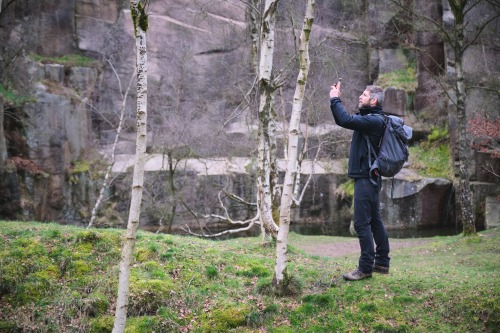Everything You Need to Know About Wharfedale
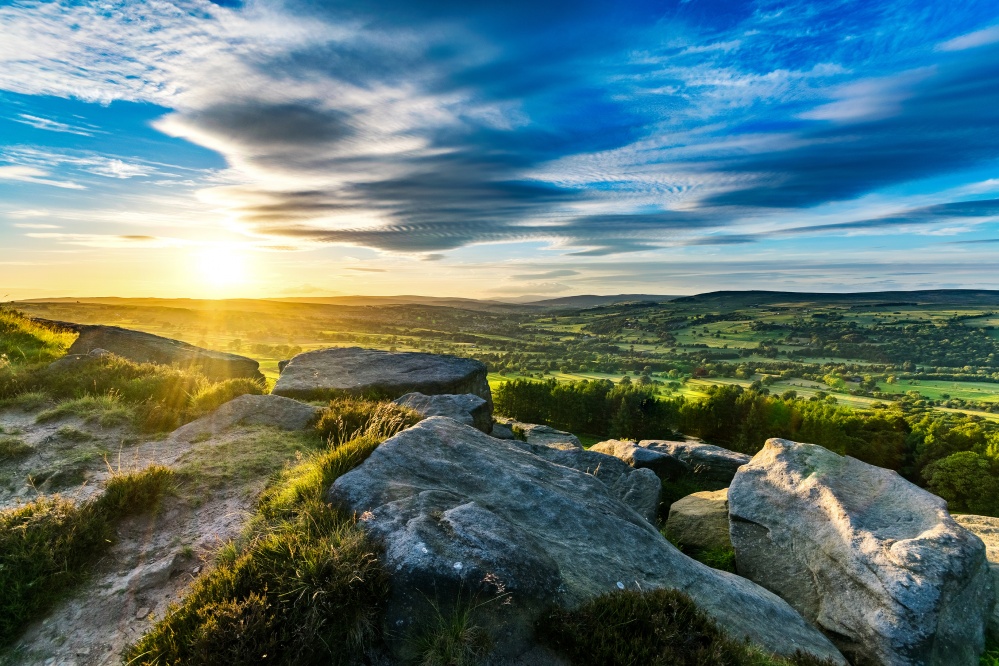
The Wharfedale valley is a classic U-shape, carved out by a moving glacier more than 12,000 years ago
Named after the river Wharfe, which starts at Cam Fell above Beckermonds, the valley provides a border between West and North Yorkshire, and Wetherby is traditionally seen as the end of Wharfedale, even though the River Wharfe carries on east through the Vale of York. The geology of the valley is also different, with Langstrothdale and Upper Wharfedale mainly limestone and the lower part around Ilkley consisting of millstone grit.
Because of its very nature it’s easier to split Wharfedale into two when exploring the area. Upper Wharfedale is a place of contrast. Ancient semi-natural woodlands punctuate the large hay meadows, and grassland and moorland cover the valley sides. The scenery is dominated by the limestone crags of the Pennines, and the valley sides are pockmarked with rocky outcrops such as the spectacular Kilnsey Crag.
There are many pretty villages strung along the valley. Hubberholme is where you’ll find the ashes of writer JB Priestley who loved this area; St Michael and All Angels is one of the most historic and picturesque of all the churches in Wharfedale. Originally a Norman Forest Chapel it dates from the 12th century and is situated on the site of an Anglo-Norse burial ground. It was the craftsman Robert Thompson, also known as the ‘Mouseman’, who designed the oak church pews here and left his trademark mouse on the woodwork. On the opposite side of the church is the George Inn, which was originally the home of the vicar. When the pub is open, a candle is lit in the window just like the vicar used to do when he came home as a signal to his parishioners that he was available.
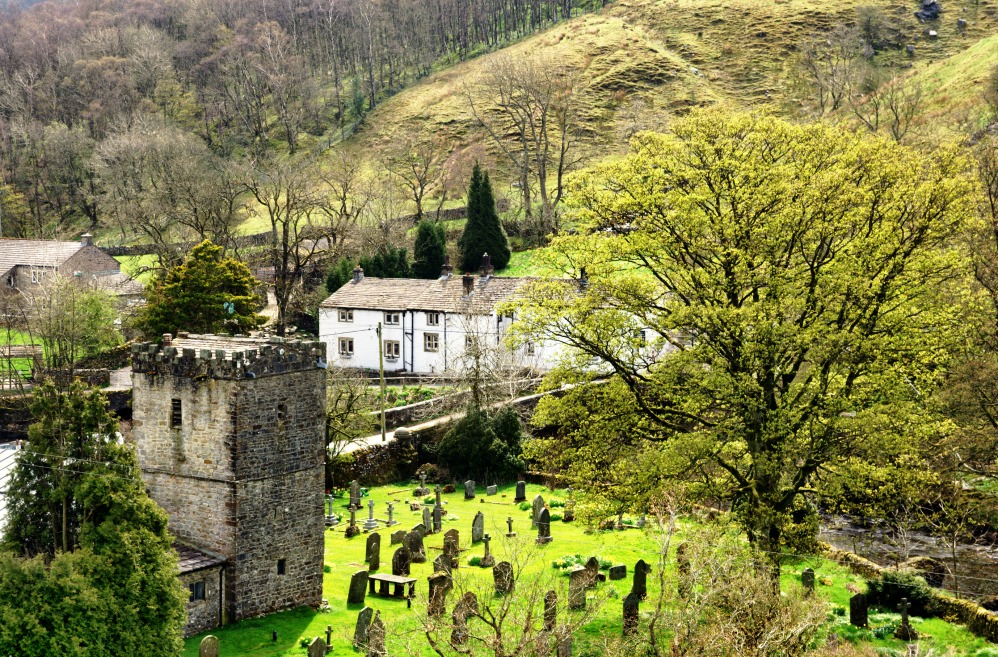
Moving down the dale, Kettlewell is a pretty village with whitewashed cottages. A busy market town in the Middle Ages, it is now a more sedate place and best known as a base for walkers who want to explore nearby Buckden Pike (the highest fell in the area after Great Whernside) and Kilnsey Crag. Just to the south of Buckden’s summit is the memorial cross erected to honour the memory of five Polish airmen who crashed their bomber into the remote hillside. Visit Kettlewell in August and you can enjoy the amazing annual Scarecrow Festival which has become a real attraction, raising money for the local church and school. Moving down the valley again you’ll find Grassington. With its cobbled square, narrow streets and tiny cottages it’s like stepping back in time – no wonder it’s one of the most popular towns in the area and hardly surprisingly hosts a Dickensian Festival each Christmas, and a famous 1940s weekend each September with wartime re-enactments and swing dances. There are plenty of popular walks in and around Grassington but don’t miss Stump Cross Caverns, some of the best show caves in the country. Still heading down the dale, Burnsall is thought to be one of Yorkshire’s most picturesque villages. It may be tiny, but it’s picture-postcard beauty makes it hugely popular and it still manages to support two hotels and a pub! The old grammar school here was built in 1601 by William Craven, who went on to become Lord Mayor of London. The Grade-I listed building is still used as a primary school today. Above the village is Burnsall Fell, whilst nearby Trollers Gill is a limestone gorge once thought to be home to a tribe of trolls who would drop boulders down on anyone who dared venture into the ravine. It is also thought to be the haunt of the Barguest, (a huge wolf-like dog with big saucer-like eyes), the inspiration for Conan Doyle’s Hound of the Baskervilles.
On your way to Bolton Abbey, make sure you detour to Appletreewick with its 17th century cottages strung along the road. Once famous for its lead mines on the fell behind the village, Appletreewick was also known for it annual Onion Fair attended by all the local gentry.
Don't Miss
Grassington’s Folk Museum is where to go for an insight into the history of life in the Dales, with exhibits of local lead mining, faming tools, period costumes, World War II memorabilia, and domestic life from long ago. Discover how the dales folk survived, how they terraced the valley sides to grow food, and how the lead mines saved many from starvation. A cobbler’s bench, complete with tools, reminds us of when footwear was made and mended in the village and how travel was mainly by foot for many of the dales folk.
Parceval Hall Gardens are a lasting testament to the remarkable insight of Sir William Milner, who, in 1927, began a project to rebuild the derelict 16th century shell of Parceval Hall near Appletreewick, and who worked on the gardens here until his death in 1960. With a mix of alkaline soil over limestone and acid soil over millstone grit, the garden can support a whole host of specialist plants, including many of Sir William’s stunning hybrid rhododendrons, and a variety of alpine, woodland plants and specimen trees.
Bolton Abbey was founded by Augustinian monks, and the 12th century priory was once one of the largest monasteries in England. Building work was still taking place here up until the Dissolution of the Monasteries in 1540 when the main buildings were stripped of their lead roofs and soon fell into ruin. Rather amazingly, the Church of St Mary and St Cuthbert which adjoins the abbey was left intact, and thanks to remedial work during Victorian times it still boasts beautiful stained-glass windows and wall frescoes. Once you’ve explored the abbey ruins, cross the River Wharfe on the famous stepping stones; there are 57 in total which date back hundreds of years. One popular walk here follows the banks of the river through Strid Wood, which is now a Site of Specific Scientific Interest and is home to more than 60 different plant species.
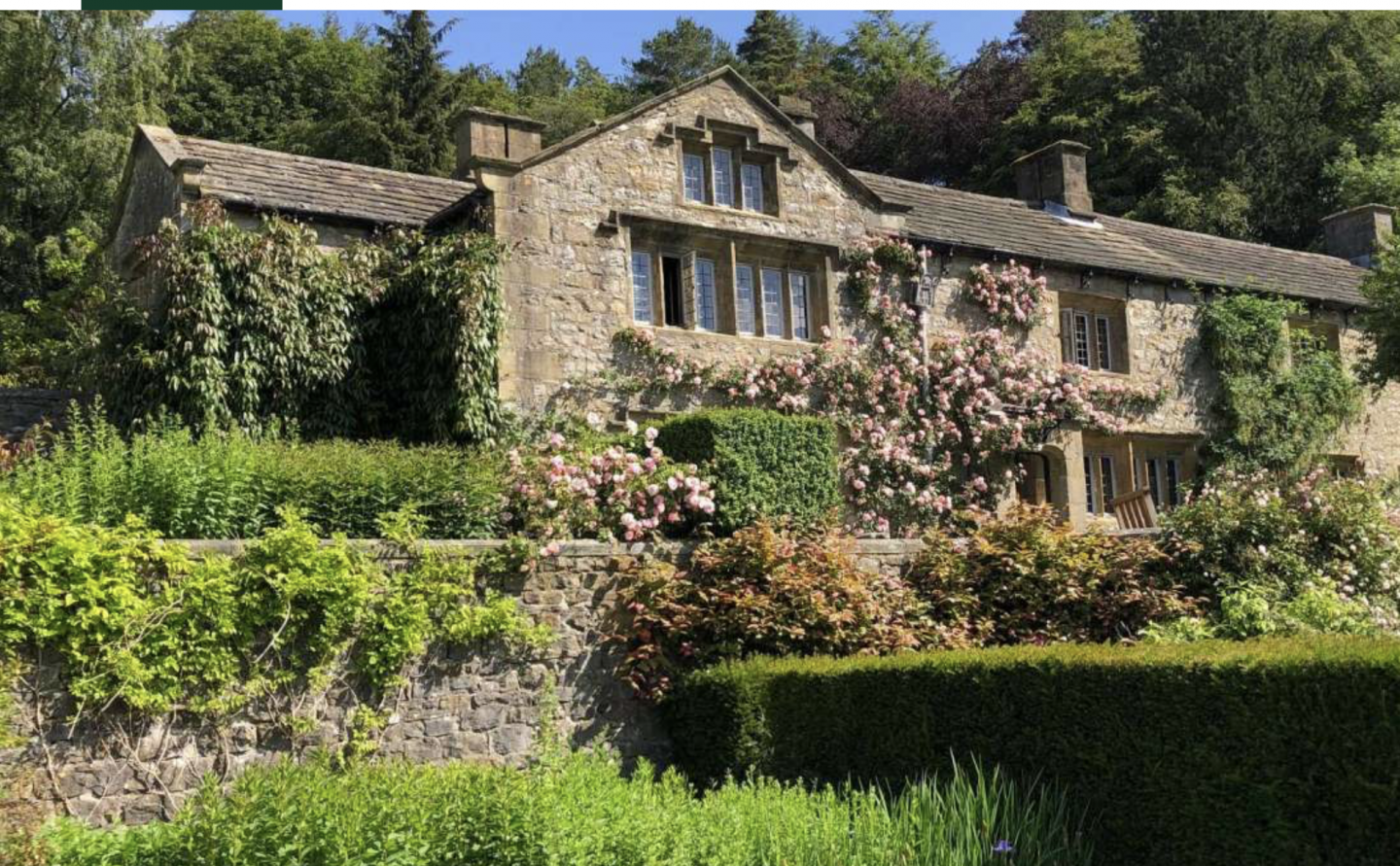
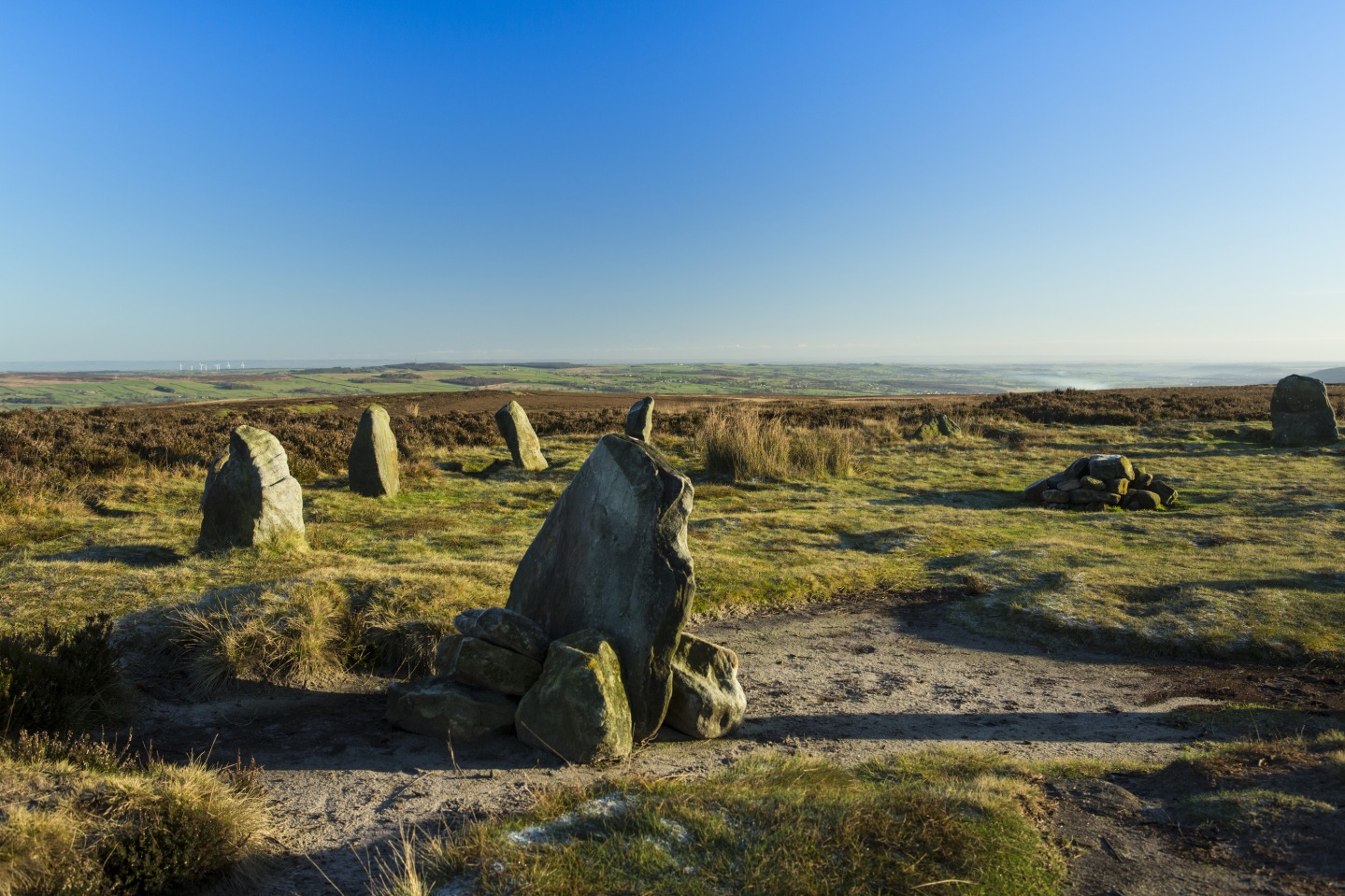
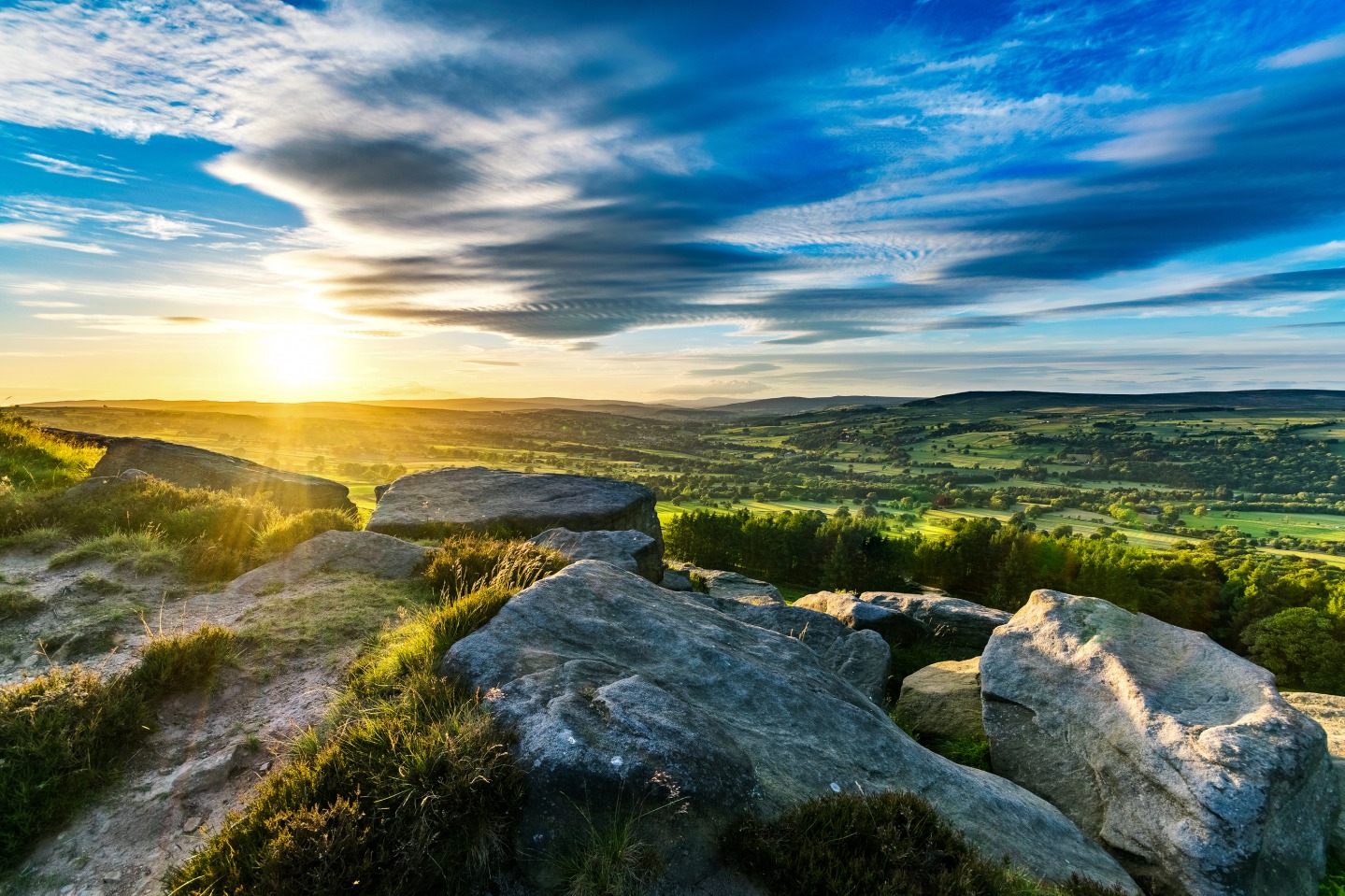
Stay A While
The George Inn, Hubberholme, is a traditional inn with rooms overlooking the village church and serving hearty pub classics. In Grassington, head to the elegant Grassington House overlooking the town’s cobbled square. There’s a well thought of restaurant here and nine individually-designed, luxurious rooms. Once at Bolton Abbey you’ll want to book into The Devonshire Arms. Part of the Bolton Estate, this is a superb country house hotel with a spa, the fine-dining Burlington Restaurant and more laid-back Brasserie and Champagne and Seafood Terrace.
The small village of Addingham is where Upper Wharfedale peters out and the valley widens as we hit the major towns of Wharfedale including Ilkley and Otley. The surrounding area has been populated since the Bronze Age, although the earliest documented proof of Addingham is a record of the Archbishop of York’s visit here around 867 AD.
To the south, the Victorian spa town of Ilkley is on the northern tip of West Yorkshire, and it is the starting point of the 84 miles of the Dales Way. At one time, Ilkley was one of the country’s most popular spa towns, famous for its natural spring waters, and visitors here included naturalist Charles Darwin and Madame Marie Tussaud. It’s also famous for Yorkshire’s unofficial anthem ‘On Ilkla Moor Baht ‘at’ (roughly translated as ‘on Ilkley Moor without a hat’) which originated in the 19th century and is a warning not to go up onto the moors without a hat because of the harsh winds. The moors around Ilkley are great for walking and cycling and are seen as somewhat less challenging than the higher fells in neighbouring Upper Wharfedale. Rising up behind the town, Rombalds Moor is home to the famous cow and calf rocks; two huge rock formations which have unrivalled views over the countryside below. Now a popular commuter town, Ilkley has a thriving town centre with plenty of great shops and restaurants, and it has an outpost of Bettys, the not-to-bemissed tea room.
Heading a little further down the dale, Otley is another popular town on the Wharfe. A bustling market town, with quaint cobbled streets and lots of independent shops, it has a street market every week, the riverside Wharfe Meadows Park, and, high above Otley is Otley Chevin, a nature reserve home to an abundance of wildlife, a Forest Park crisscrossed by cycling trails and paths, and with breathtaking views over Wharfedale. The pubs around Otley’s market square are said to have been visited by Oliver Cromwell’s Parliamentarian soldiers when they camped in the town on the eve of the Battle of Marston Moor – they are said to have ‘drunk the town dry’ before the battle which amazingly they still managed to win (although they did outnumber the Royalists by at least 5,000 men).
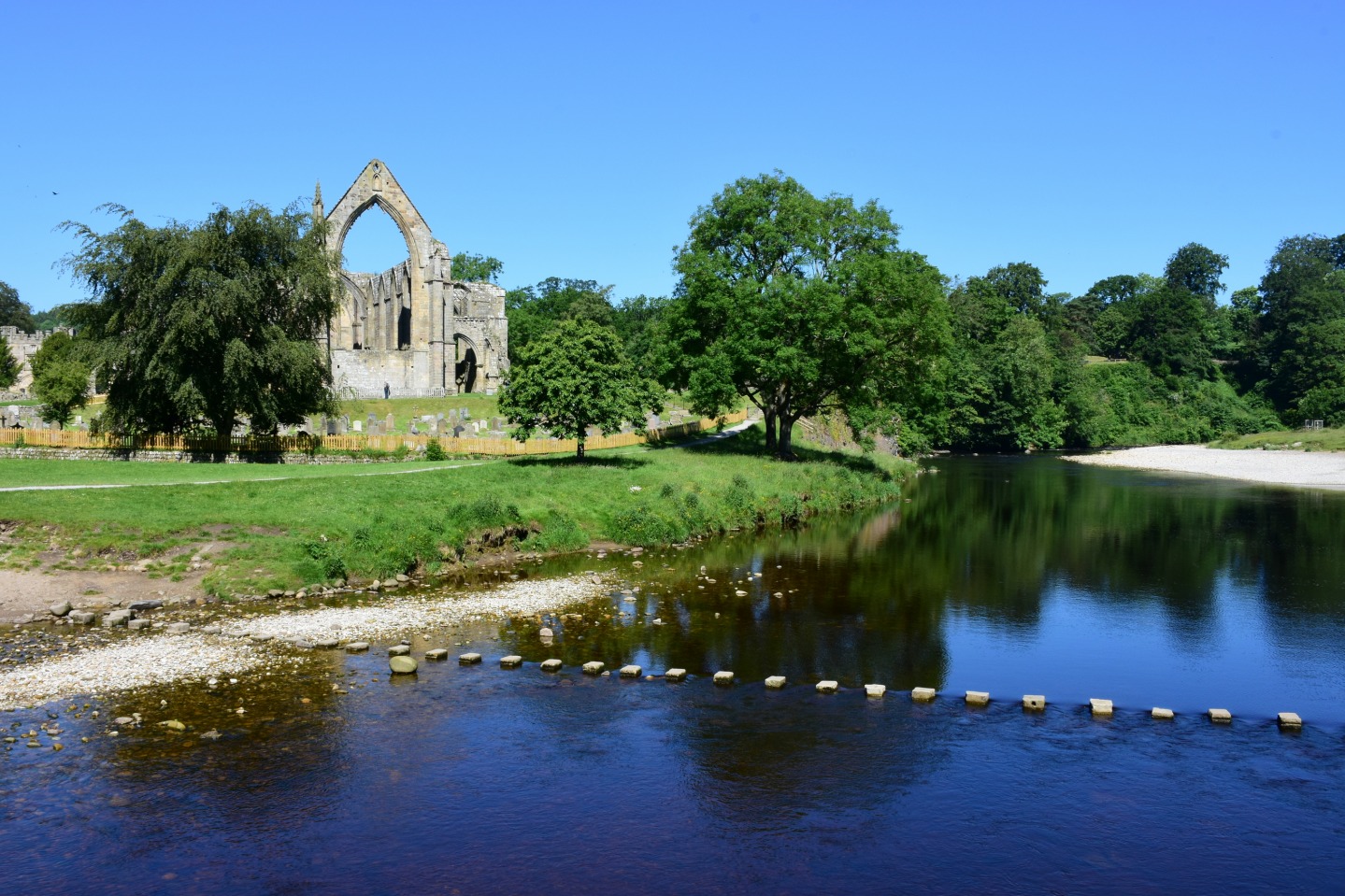
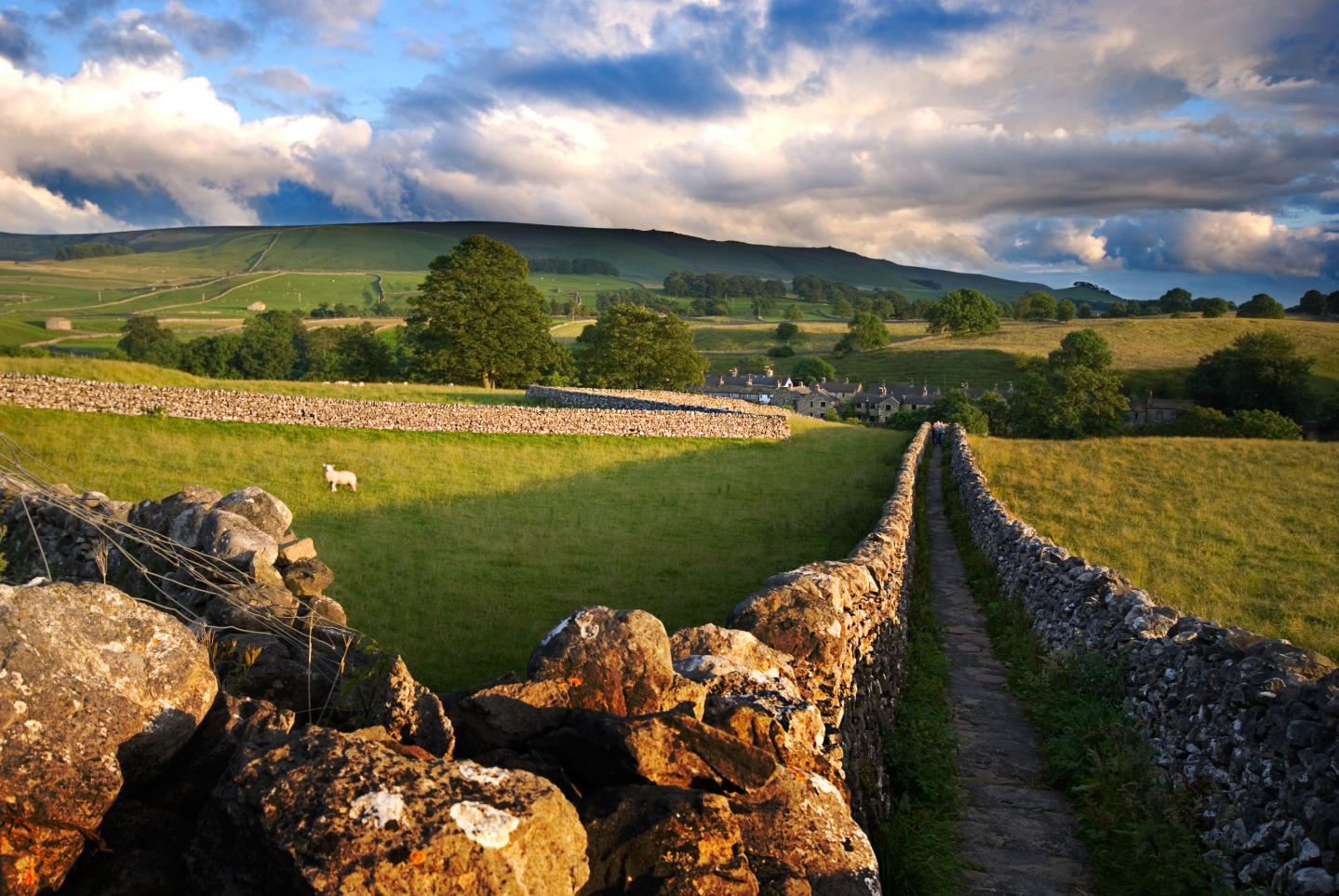
Don’t Miss
Ilkley Manor House is a Grade-I-listed medieval house in the town centre. Run by volunteers, it is the centre for heritage and arts in Ilkley and runs programmes of events, concerts and exhibitions, or why not take a journey back into childhood at the Toy Museum? Showing toys from 4th century BC to the present day there’s everything here from dolls and teddies to tin soldiers, and there is also a nationally-important collection of early English wooden dolls.
From Ilkley, climb to the highest point on the moor. It takes about two and a half hours and includes areas of archaeological and geological interest including the Twelve Apostles; a stone circle which dates back to the Bronze Age and is thought to be 1,000 years older than Stonehenge. The stones form a wide circle and although there are now 12 millstone grit standing stones, it is thought there were originally 20 and it’s believed they were placed to observe movements of the the sun and moon. The panoramic views make the climb worthwhile and on a clear day you can see the White Horse of Kilburn on the Hambleton Hills.
Stay A While
In Ilkley, The Crescent Inn is a pub with 14 boutique bedrooms and a cosy French bistro, perfectly placed for exploring the town and surrounding moors. On a leafy lane in the village of Ben Rhydding, The Wheatley Arms is a family-friendly pub with 12 rooms and great grub too. In Otley, head to Chevin Country Park Hotel, a log-cabin style (dog-friendly) resort in 44 acres of forest yet just two miles outside Otley. Towards Wetherby and the end of Wharfedale is Wood Hall Hotel & Spa, a Georgian country house turned into a smart but not stuffy hotel with gorgeous gardens and a popular two AA-Rosette restaurant too.




